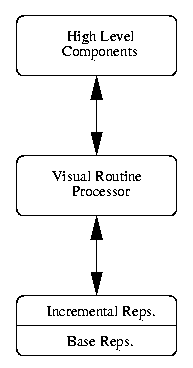 |
Figure 7. Visual Routine Processor is responsible for putting together (e.g. combining the elemental operations) and executing the visual routines. The processor also acts as a "middle-man" between the base and incremental representations and the higher level components such as memory. Communications between them is done via the routine processor. |


